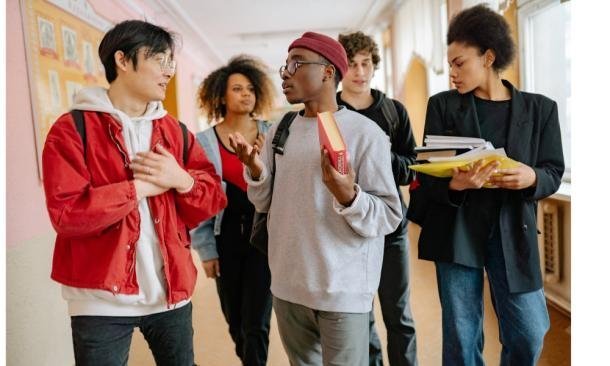Higher education as we know it is due for a massive makeover. From outdated curriculums to exclusionary teaching styles, too many systems still cater to one size fits all. But a recent global fireside chat is helping change that narrative by spotlighting an innovative solution: pluralism. Simply put, pluralism in education means embracing diversity — in ideas, cultures, pedagogies, and people — so that learning becomes more human, more inclusive, and a whole lot more relevant.
The Global Fireside Chat: A New Lens on Education
Hosted virtually and broadcast globally, the fireside chat gathered thought leaders, policymakers, educators, and students from around the world. The goal? To open up new conversations around transforming higher education through the lens of pluralism. From panel discussions to live Q&As, the event brought energy, urgency, and vision to the table.
What is Educational Pluralism?
Educational pluralism is all about coexistence and choice. It acknowledges that there isn’t just one way to teach or one type of learner. Whether through religious institutions, indigenous education systems, state-run universities, or digital academies, pluralism values diversity in all its forms.
Think of it this way: instead of one road leading to success, pluralism builds a network of paths that reflect different identities, worldviews, and strengths.
Why Higher Education Needs Pluralism Now More Than Ever
In our hyperconnected world, rigid academic systems are being left behind. Global challenges — like climate change, migration, and social inequality — require minds that are flexible, empathetic, and innovative. Pluralism gives students the tools to think critically across cultures and disciplines.
Plus, with AI disrupting jobs and creating new ones, learners must continuously adapt. Pluralism makes space for this by promoting lifelong learning and multidisciplinary knowledge.
Key Insights from the Fireside Chat
-
Redesign Curriculums to Reflect Global Realities
-
History that includes African, Asian, Indigenous, and Latin American perspectives
-
Science taught with social context
-
-
Rethink Classrooms as Democratic Spaces
-
Student-led learning
-
Cross-cultural project-based experiences
-
-
Move Beyond Grades and Degrees
-
Real-world competencies like problem-solving and teamwork
-
Recognition of informal and non-formal learning
-
Diverse Voices, Shared Vision
From Kenya to Canada, participants spoke with one voice: inclusion isn’t optional — it’s essential. Notably, African delegates pushed for decolonizing curriculums, while European educators called for dismantling elitist academic barriers. This alignment showed that while our contexts may differ, our goals often converge.
Case Studies in Pluralistic Education
-
India: Delhi University’s language electives empower local dialect speakers.
-
Canada: Universities like UBC offer degrees in Indigenous governance.
-
Finland: Classrooms focus on trust, collaboration, and student agency.
Challenges to Implementing Pluralism
Let’s not sugarcoat it — change isn’t easy.
-
Bureaucracy resists innovation.
-
Faculty retraining is resource-intensive.
-
Digital access gaps persist in low-income countries.
But with will and funding, they’re not insurmountable.
Solutions and Models for Reform
-
Policy shifts that give autonomy to institutions
-
Flexible accreditation models
-
Educator exchange programs to build global competence
The Role of EdTech in Supporting Pluralistic Learning
From translation apps to AI tutors, technology can amplify pluralism. Key tools include:
-
Khan Academy’s multilingual content
-
Coursera’s global classroom tools
-
Text-to-speech and braille plugins for inclusion
Building Institutional Support Systems
For pluralism to thrive, institutions need to back it up with real resources:
-
Peer mentorship programs
-
Mental health services tailored to diverse identities
-
Safe spaces for cultural expression
Public-Private Partnerships and Pluralism
Pluralism isn’t just an academic agenda — it’s economic too. Companies like Microsoft and Google are partnering with universities to:
-
Fund STEM programs for women
-
Host hackathons for refugee students
-
Support entrepreneurial incubators in rural communities
Pluralism and Employability
Employers today want more than GPAs. They want:
-
Cross-cultural communication skills
-
Adaptability in diverse teams
-
Emotional intelligence and ethics
Pluralistic education delivers all of that — and more.
Voices from the Ground
-
Anjali, student in Bangalore: “Learning in both Kannada and English changed how I see the world.”
-
Carlos, teacher in São Paulo: “My students now debate philosophy in three languages!”
Policy Recommendations from the Fireside Chat
-
Include pluralism as a national education indicator
-
Fund pluralism innovation labs at major universities
-
Revamp teacher training curriculums
A Global Call to Action
We’ve talked enough. It’s time to act. Ministries of Education must rethink old models. Universities should pilot pluralistic programs. EdTech founders need to build for diverse learners. And you — yes, you — can start by asking: Is my classroom really inclusive?
Conclusion
Higher education must evolve — and pluralism is the blueprint. It’s how we raise thinkers who not only ask better questions but build a better world. Let’s reimagine learning together — not for the few, but for all.
FAQs
1. What does pluralism in education mean?
It means embracing diversity in how, what, and where we learn — promoting choice, access, and inclusion.
2. How does pluralism benefit students?
It helps students gain cultural competence, adapt to changing job markets, and feel seen and heard.
3. What are some examples of pluralism in higher education?
Multilingual programs, flexible degree paths, indigenous knowledge courses, and tech-assisted inclusive learning.
4. What are the main obstacles to pluralistic education?
Policy rigidity, lack of funding, teacher retraining gaps, and unequal digital access.
5. Where can I learn more about this initiative?
Check out UNESCO’s Education for Sustainable Development or visit the Global Education Monitoring Report.


